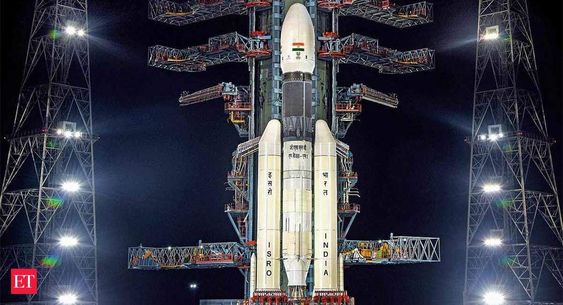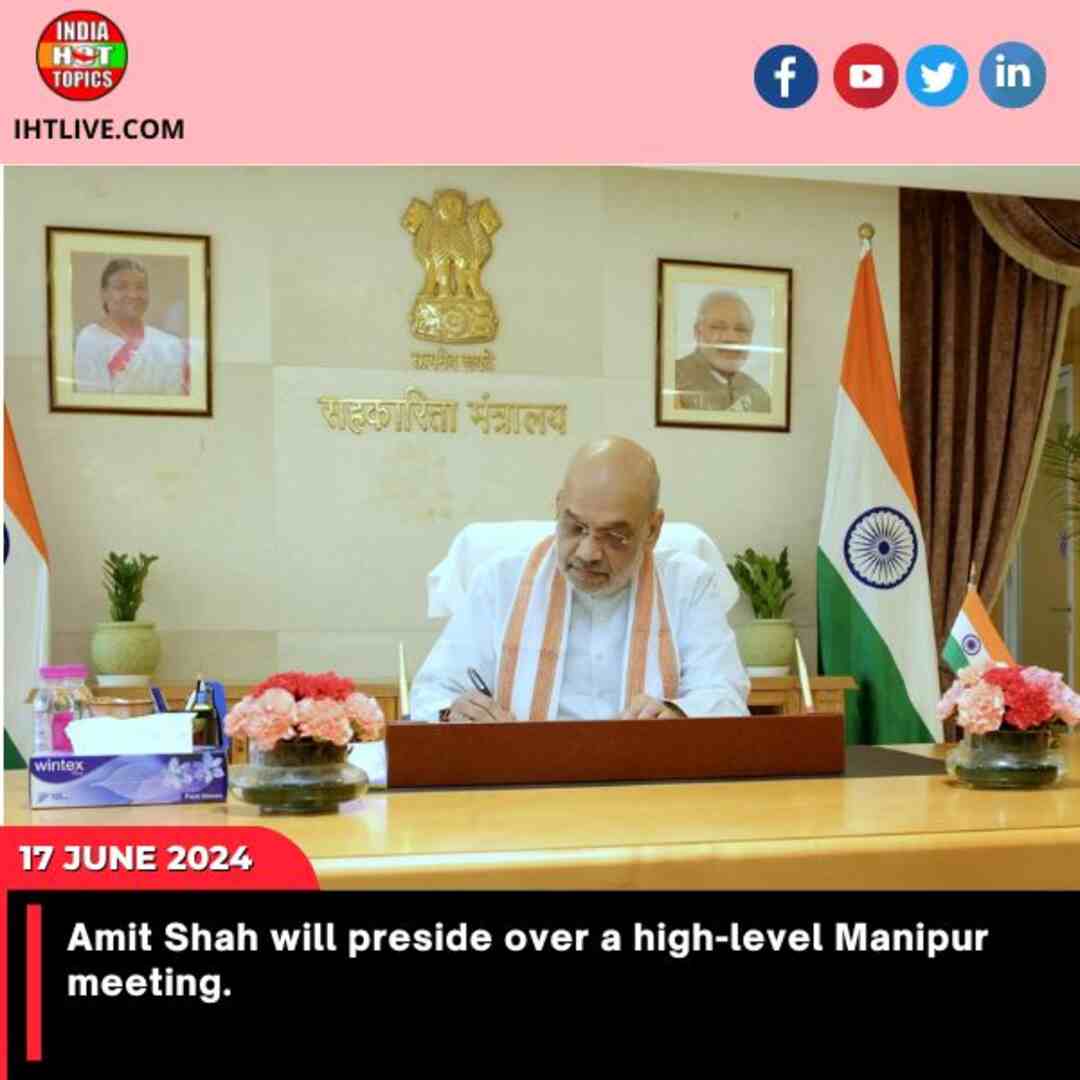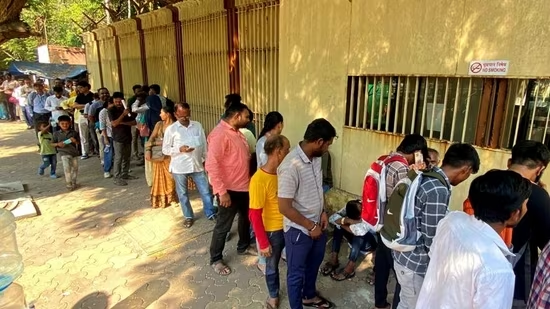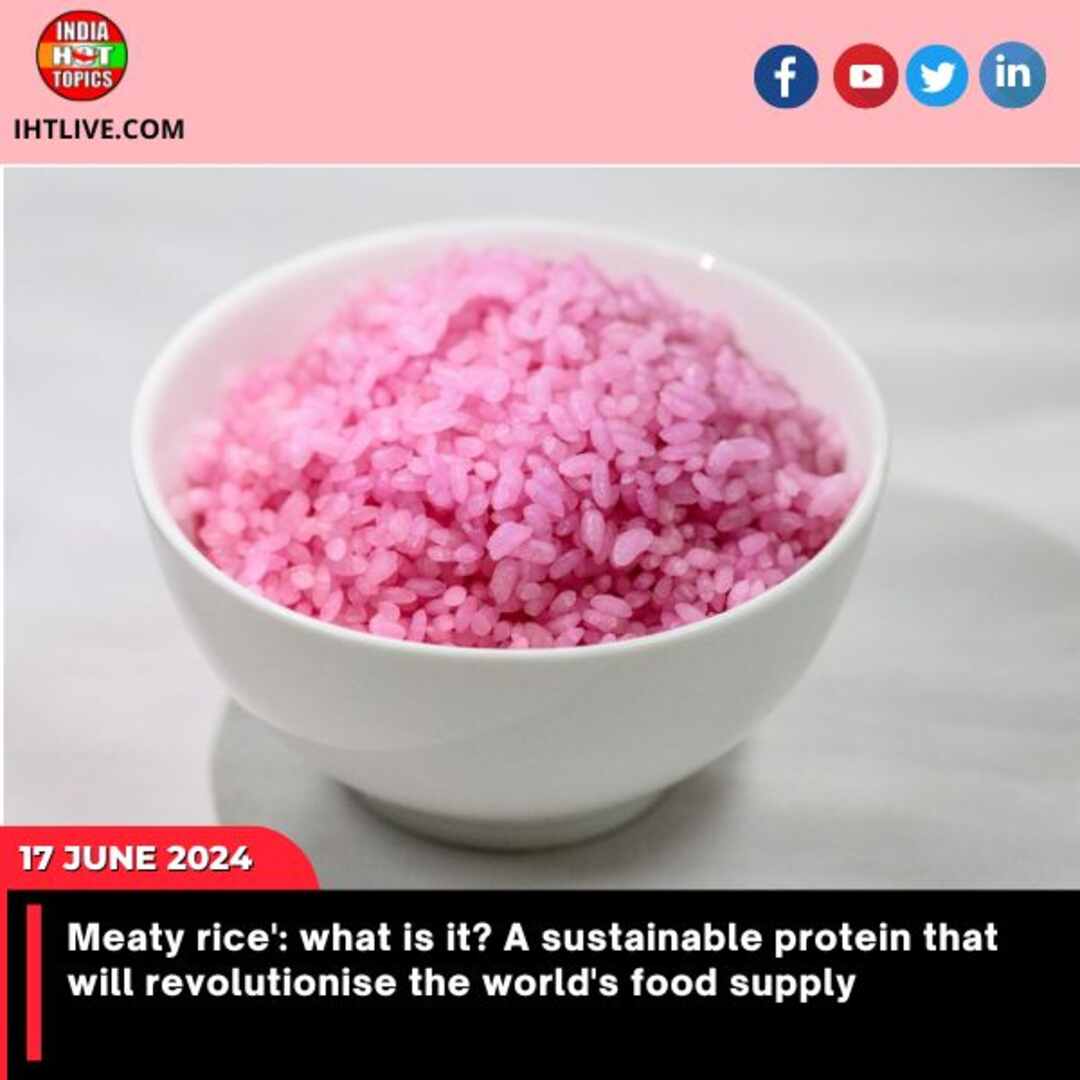India
What is LVM-3, the launch vehicle for the Chandrayaan-3 moon exploration mission?

Table of Contents
India’s ambitious lunar exploration program, Chandrayaan, is set to take another giant leap with the upcoming Chandrayaan-3 mission. Central to this endeavor is the formidable launch vehicle, the LVM-3 (Launch Vehicle Mark-3), which will propel the spacecraft towards the Moon’s mysterious surface.
The LVM-3, developed by the Indian Space Research Organisation (ISRO), stands as a testament to India’s growing prowess in space technology. With an impressive height of approximately 43 meters and a lift-off mass of about 640 tonnes, the LVM-3 is a powerful and robust launch vehicle designed to carry heavy payloads to space.
Equipped with advanced propulsion systems, the LVM-3 boasts a core liquid booster and two solid strap-on motors, providing an exceptional thrust capability during the initial stages of the launch. This tremendous power enables it to overcome Earth’s gravity and deliver the spacecraft to the desired trajectory for its lunar mission.
The Chandrayaan-3 mission, following the success of its predecessor Chandrayaan-2, aims to further expand India’s scientific knowledge of the Moon. The LVM-3 will play a pivotal role in delivering the spacecraft, carrying a suite of sophisticated instruments and equipment, to the lunar orbit.
The launch vehicle’s impressive capabilities allow it to accommodate the significant payload requirements of the Chandrayaan-3 mission. It possesses a capacity of launching payloads weighing up to 8,000 kilograms to the geosynchronous transfer orbit (GTO) and approximately 4,000 kilograms to the Moon’s polar orbit.
The development and successful deployment of the LVM-3 showcase India’s commitment to advancing its space exploration capabilities. The mission not only aims to conduct scientific experiments but also seeks to pave the way for future endeavors, such as manned missions and further lunar exploration.
The LVM-3’s launch for the Chandrayaan-3 mission is scheduled to take place from the Satish Dhawan Space Centre in Sriharikota, Andhra Pradesh, India’s primary spaceport. The precise launch date will be determined based on a range of factors, including the alignment of the Moon and the spacecraft’s readiness for the journey.
As India gears up for its third lunar mission, the successful deployment of the LVM-3 launch vehicle will mark another significant milestone in the nation’s space exploration endeavors. It demonstrates India’s commitment to scientific advancement and highlights its growing influence in the global space community.
The Chandrayaan-3 mission, powered by the remarkable LVM-3 launch vehicle, promises to unlock further mysteries of the Moon, enhancing our understanding of Earth’s celestial neighbor. As the launch approaches, the anticipation grows, and the world eagerly awaits the groundbreaking discoveries and achievements that lie ahead.
Chandrayaan-3 moon exploration
The LVM-3, developed by the Indian Space Research Organisation (ISRO), stands as a testament to India’s growing prowess in space technology. With an impressive height of approximately 43 meters and a lift-off mass of about 640 tonnes, the LVM-3 is a powerful and robust launch vehicle designed to carry heavy payloads to space.
Equipped with advanced propulsion systems, the LVM-3 boasts a core liquid booster and two solid strap-on motors, providing an exceptional thrust capability during the initial stages of the launch. This tremendous power enables it to overcome Earth’s gravity and deliver the spacecraft to the desired trajectory for its lunar mission.
The Chandrayaan-3 mission, following the success of its predecessor Chandrayaan-2, aims to further expand India’s scientific knowledge of the Moon. The LVM-3 will play a pivotal role in delivering the spacecraft, carrying a suite of sophisticated instruments and equipment, to the lunar orbit.
ISRO
The Indian Space Research Organisation (ISRO) is the premier space agency of India and has made significant contributions to the country’s space exploration and satellite technology. Founded in 1969, ISRO has played a pivotal role in advancing India’s capabilities in space research, satellite communication, and Earth observation. Over the years, ISRO has successfully launched numerous satellites for various purposes, including communication, weather forecasting, remote sensing, and navigation. The organization has achieved several notable milestones, such as the Mars Orbiter Mission in 2013, which made India the fourth country to reach Mars. ISRO’s accomplishments have not only enhanced India’s scientific and technological standing but have also contributed to global space research and collaboration. With its commitment to innovation and exploration, ISRO continues to inspire the nation and push the boundaries of space science and technology.
History of Moon Missions across the World
The history of moon missions across the world is a testament to humanity’s enduring fascination with Earth’s celestial neighbor. The first successful moon mission took place on July 20, 1969, when NASA’s Apollo 11 mission landed astronauts Neil Armstrong and Edwin “Buzz” Aldrin on the lunar surface. This iconic achievement marked the culmination of a fierce space race between the United States and the Soviet Union during the Cold War era. Prior to Apollo 11, the Soviet Union had sent several unmanned missions, including Luna 2 in 1959, which became the first human-made object to reach the moon. Over the following decades, both NASA and the Soviet space program continued their lunar exploration efforts with missions like Apollo 12, 14, 15, 16, and 17, each contributing valuable scientific data and expanding our understanding of the moon’s geology and composition. Other countries, too, have joined the race to the moon, with notable missions including the Soviet Luna program, Japan’s SELENE, China’s Chang’e program, and India’s Chandrayaan-2. These missions have brought new insights into the moon’s origin, geology, and potential for future human exploration. As we look ahead, international collaboration and renewed interest in lunar exploration promise an exciting future for moon missions, with plans to establish a sustainable human presence and pave the way for further cosmic exploration.
General News Platform – https://ihtlive.com/
Entertainment News Platforms – anyflix.in
Construction Infrastructure and Mining News Platform – https://cimreviews.com/
Podcast Platforms – https://anyfm.in/
India
Amit Shah will preside over a high-level Manipur meeting.

Monday night’s meeting to assess the security situation in Manipur will be facilitated by Union Home Minister Amit Shah. This is the first high-level gathering of its kind held by the central government since Prime Minister Narendra Modi’s National Democratic Alliance (NDA) was re-elected earlier this month.
Senior representatives from the federal government, state governments, including chief minister N Biren Singh, the army, and other security agencies are anticipated to attend the meeting at 4 p.m., according to people with knowledge of the development.
Manipur has seen fighting between the Kukis and Meiteis communities since May 3 of last year. The fighting has resulted in at least 225 deaths to far and the displacement of almost 50,000 people, the majority of whom are still living in relief shelters.
The previous few weeks have seen new acts of violence in the northeastern state, including the burning of a school facility close to Moreh and the discovery of the beheaded body of a missing individual.
In the Kangpokpi district last week, armed terrorists assaulted the vehicle of Manipur Chief Minister N Biren Singh’s enhanced security team, injuring a security officer and a civilian driver.
Dr. Mohan Bhagwat, the chief of the Rashtriya Swayamsevak Sangh (RSS), stated on June 10 that Manipur has been waiting for peace for a year and that this problem has to be given priority.
Bhagwat emphasised the importance of putting aside political hyperbole and concentrating on the issues confronting the country.
Dattatreya Hosabale, the general secretary of the RSS, called the current violence in Manipur “painful” and “worrisome.”
The Sangh, according to a statement, feels that the only way to solve any issue is “through mutual dialogue and expression of brotherhood in a peaceful atmosphere.”
In an attempt to mediate peace, Shah had earlier travelled to Manipur last month and convened nine talks with leaders of the Kuki and Meitei groups. Despite this, the violence has not decreased.
General News Platform – https://ihtlive.com/
Entertainment News Platforms – anyflix.in
Construction Infrastructure and Mining News Platform – https://cimreviews.com/
Podcast Platforms – https://anyfm.in/
India
Uttar Pradesh: PM Modi’s visit to the Kashi Vishwanath temple in Varanasi is well underway.

On Tuesday, Prime Minister Narendra Modi will travel to Varanasi, his home district in the Lok Sabha. This will be his first trip to the sacred city since taking office as the nation’s third prime minister.
At the historic Kashi Vishwanath temple, PM Modi is expected to engage with farmers and take part in Ganga Aarti.
What is currently known regarding Prime Minister Narendra Modi’s visit to Varanasi is as follows:
For 4.5 hours, Prime Minister Modi will be in Varanasi. At roughly 4 p.m., he will touch down at Babatpur’s Lal Bahadur Shastri International Airport.
Prior to releasing the 17th installment of the Samman Nidhi, which is intended to benefit 2,76,665 farmers in Kashi, PM Modi will attend a “Kisan Samelan.”
In order to commemorate the farmers in the area, PM Modi will meet with 21 of them at the Kisan Samelan and evaluate their products. BJP party officials are preparing for the visit.
The visit of Prime Minister Modi is a source of pride for the people of Varanasi, according to BJP president Dilip Patel. “We are all proud that Prime Minister Narendra Modi has taken the oath of office three times—once as the nation’s prime minister and once as a member of the Varanasi assembly.”
Following his meeting with the farmers, Prime Minister Modi is scheduled to attend the Ganga Aarti at Dashashwamedh Ghat at the Kashi Vishwanath temple.
Vishwa Bhushan Mishra, the CEO of the Kashi Vishwanath temple, stated in an interview that they have a process for the Prime Minister’s visit. PM Modi is anticipated to spend about twenty-five minutes inside the temple.
Ajay Rai, Modi’s previous opponent for the Varanasi seat, criticised him, claiming that Modi was displacing natives with Gujaratis by handing all employment to them. Regarding the purported dearth of factories and development in the city, he questioned Modi.
General News Platform – https://ihtlive.com/
Entertainment News Platforms – anyflix.in
Construction Infrastructure and Mining News Platform – https://cimreviews.com/
Podcast Platforms – https://anyfm.in/
India
Sunita Kejriwal is requested by the Delhi High Court to remove Arvind Kejriwal’s court footage from social media.

The wife of chief minister Arvind Kejriwal, Sunita Kejriwal, has been ordered by the Delhi High Court to remove a video of her husband speaking to a Delhi court from her social media accounts. The social media companies have also been ordered by the court to remove posts that contain links to the video.
In addition, the high court has sent notices to all parties involved in the PIL, which was filed by lawyer Vaibhav Singh, alleging that Kejriwal’s appearance before Delhi’s Rouse Avenue Court on March 28 violated the court’s regulations regarding video conferencing.
Among the five people requested to remove the social media posts is Sunita Kejriwal.
The court has set July 9 for the hearing.
On March 28, Arvind Kejriwal personally addressed Special Judge (PC Act) Kaveri Baweja after being brought before the court a second time after being arrested by the Enforcement Directorate in connection with the Delhi liquor policy case.
Sunita Kejriwal reposted the images after the audio and video recordings of the speech went viral on social media.
When films with comparable content are brought to their attention, the Delhi High Court ordered X, YouTube, Facebook, and Instagram to remove them.
The notice on the PIL filed by the Delhi-based attorney Vaibhav Singh was issued by a division bench made up of Justices Neena Bansal Krishna and Amit Sharma.
After he disregarded nine summonses from the Enforcement Directorate, Arvind Kejriwal was taken into custody on March 21 in relation to the excise policy fraud. Subsequently, the Delhi High Court affirmed the agency’s decision.
Later, Arvind Kejriwal petitioned the Supreme Court to overturn his arrest.
In order to enable Kejriwal to campaign for his Aam Aadmi Party during the Lok Sabha elections, the Supreme Court granted him temporary release in May for a period of 21 days.
On June 2, he turned himself in to the Tihar Jail officials per the Supreme Court’s directive.
The former bureaucrat Sunita Kejriwal had spent a great deal of time campaigning for the AAP during the Lok Sabha elections. But the party was unable to secure a single seat in the nation’s capital.
General News Platform – https://ihtlive.com/
Entertainment News Platforms – anyflix.in
Construction Infrastructure and Mining News Platform – https://cimreviews.com/
Podcast Platforms – https://anyfm.in/
-

 India8 months ago
India8 months agoThe afternoon briefing revealed that 97.26% of the ₹2000 notes were returned, and the Israeli Prime Minister committed to war goals.
-

 Business1 year ago
Business1 year agoSrikanth Venkatachari is appointed as the new chief financial officer by Reliance Industries.
-

 Entertainment1 year ago
Entertainment1 year agoNew Season 8 The Walking Dead trailer flashes forward in time
-

 India1 year ago
India1 year agoPM Modi’s Three-Nation Tour Begins with a Traditional Welcome in Papua New Guinea
-

 Fashion7 years ago
Fashion7 years agoThese ’90s fashion trends are making a comeback in 2017
-

 India Hot Topics12 months ago
India Hot Topics12 months agoCenter ‘busts’ 8 YouTube channels for distributing false information.
-

 Business7 years ago
Business7 years agoThe 9 worst mistakes you can ever make at work
-

 India1 year ago
India1 year ago3 Vande Bharat Trains, An E-way: MP’s Infra, Connectivity Projects on Fast Track ahead of Assembly Polls








